Your skin’s electrical conductivity creates a unique biometric signature that’s nearly impossible to replicate because it measures your autonomic nervous system’s responses through sweat gland activity. The technology detects both your identity and emotional state, automatically identifying when you’re under duress or coerced into authenticating. This dual-layer security combines physiological uniqueness with stress detection, making unauthorized access extremely difficult. Advanced devices generate cryptographic keys from these electrical patterns, and exploring these mechanisms reveals why this authentication method offers unprecedented security advantages.
The Biometric Foundation of Skin Conductance Technology
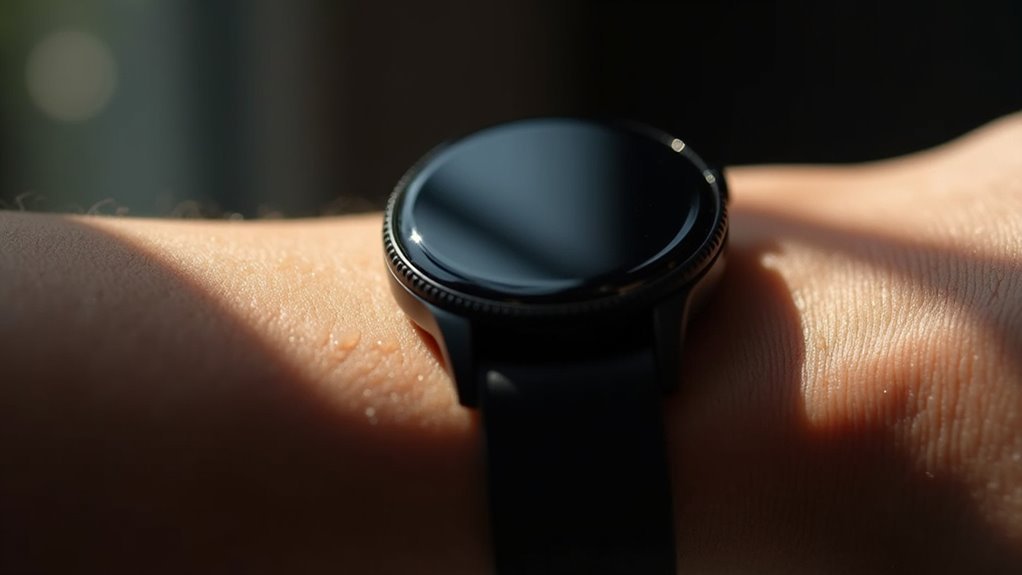
While traditional biometric systems rely on static physical features like fingerprints or facial geometry, skin conductance authentication operates on an entirely different principle by measuring your body’s electrical conductivity as it fluctuates with sweat gland activity.
Your eccrine sweat glands respond to autonomic nervous system signals, creating unique electrodermal activity patterns that serve as your biometric signature.
This physiological approach captures both tonic and phasic components of your skin’s electrical responses, generating individual-specific patterns that can’t be easily replicated.
Unlike physical biometrics that remain constant, your skin conductance reflects dynamic internal processes tied to your unique physiological makeup.
This foundation creates a security advantage because it’s rooted in real-time biological responses rather than static characteristics that can be copied or stolen. The behavioral biometrics approach of skin conductance authentication provides enhanced security through its assessment of unique physiological traits during the authentication process.
How Emotional State Detection Enhances Security
Building on skin conductance’s physiological foundation, emotional state detection adds another powerful security layer by monitoring your psychological responses during authentication attempts.
Emotional state detection creates an advanced security layer by analyzing psychological responses during authentication, making unauthorized access significantly more difficult to achieve.
When you’re stressed or anxious during unauthorized access, your emotional state reveals behavioral patterns that security systems can analyze. This technology combines facial recognition with physiological responses to create thorough risk assessments in real-time.
You’ll benefit from multimodal authentication that verifies your identity through multiple emotional and biometric factors, making spoofing attempts considerably harder.
The system adapts security measures based on your current emotional state, providing dynamic protection while enhancing user experience. Wearables often record physiological data to enhance emotion recognition accuracy and support the authentication process.
However, you must consider privacy concerns, as this sensitive data requires strict compliance with regulations like GDPR and explicit user consent.
Involuntary Physiological Responses as Defense Mechanisms
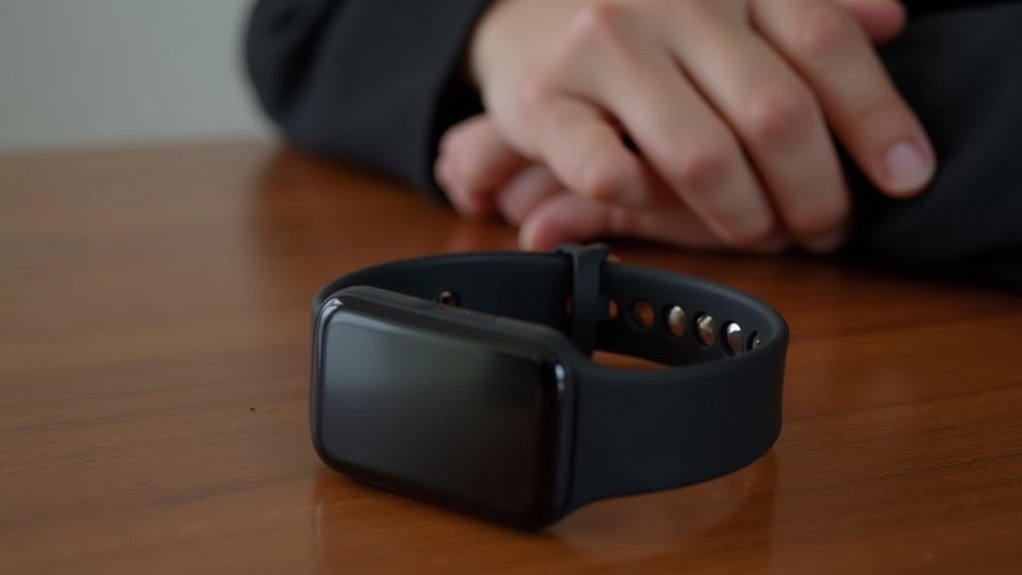
When unauthorized users attempt to breach security systems, their bodies betray them through involuntary physiological responses that can’t be consciously controlled or faked.
Your autonomic nervous system activates stress responses when you’re attempting deception or unauthorized access, creating detectable changes in skin conductance. These unconscious defense mechanisms serve as natural security barriers that strengthen authentication protocols.
Your body’s stress triggers produce physiological changes that include:
- Increased cortisol levels – Your HPA axis activates during high-stress situations like security breaches.
- Elevated skin conductance – Your sympathetic nervous system creates measurable electrical changes across your skin.
- Fight-or-flight activation – Your survival mechanisms engage when you’re attempting unauthorized access.
These involuntary responses create unique biometric signatures that enhance security by detecting physiological stress patterns associated with deceptive behavior. Like psychological defense mechanisms, these physiological responses operate automatically to protect against perceived threats in security environments.
Cryptographic Key Generation Through Skin Conductance
Your skin’s electrical conductivity becomes the foundation for generating cryptographic keys that can’t be replicated or forced from you under duress. This novel technique incorporates your physiological responses to enhance security beyond traditional methods.
Your body becomes your password through skin conductivity, creating unbreakable cryptographic keys that resist forced extraction through physiological stress detection.
You’ll find it works with both symmetric and asymmetric cryptographic systems, using your skin conductance as a reliable randomness source similar to Random Bit Generators.
The process combines your voice with skin conductance readings, creating a multi-modal approach that strengthens authentication through cross-validation. Your keys require voluntary participation – coercion triggers detectable emotional changes that prevent successful generation.
For widespread adoption, this system must comply with FIPS standards for cryptographic modules and transport keys through secure channels to prevent interception during the authentication process. Initial testing with 39 participants demonstrated moderate false-positive and false-negative rates while revealing how attackers might attempt to compromise the system.
Measurement Techniques and Device Accuracy
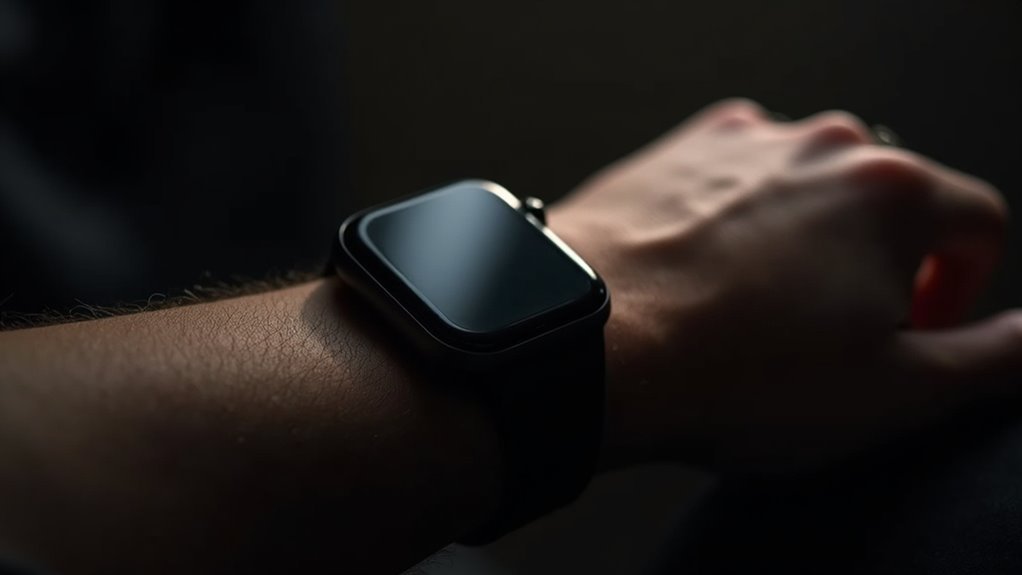
Since reliable cryptographic key generation depends on precise physiological measurements, you’ll need to understand the fundamental techniques that capture skin conductance data with sufficient accuracy for security applications.
The constant-voltage method serves as your foundation, delivering consistent baseline measurements of sympathetic nervous system activity. You’ll capture both skin conductance levels (SCL) for tonic activity and phasic responses (SCR) for stimulus-specific reactions.
Advanced devices like the Biopac MP36R offer exceptional precision with 24-bit A/D conversion at 100,000 samples per second.
Three critical factors guarantee measurement reliability:
- High-resolution sampling rates that capture minute physiological variations
- Noise reduction filtering to eliminate environmental interference
- Standard deviation analysis (SCLstd) to quantify signal variability over time
These techniques provide the measurement fidelity essential for generating cryptographically secure keys from your unique physiological signatures.
Detecting Coercion Through Physiological Changes
Beyond generating cryptographic keys, skin conductance measurements serve a critical security function by detecting when you’re being coerced to authenticate.
When you’re under duress, your sympathetic nervous system triggers increased sweat production, creating distinct conductivity patterns that authentication systems can recognize. This physiological response is involuntary, making it nearly impossible to mask your true emotional state during forced access attempts.
Your skin conductance data gets integrated into the authentication process, allowing systems to monitor stress-induced changes in real-time.
If elevated stress responses indicate coercion, the system can reject your authentication attempt, preventing unauthorized access. Physiological signals can enhance emotion recognition systems used in authentication protocols.
While accuracy isn’t perfect due to external factors like medications or environmental variables, combining skin conductance with other biometric modalities notably enhances your system’s resistance against coercion attacks.
Processing Skin Conductance Data for Authentication
When skin conductance sensors capture your physiological data, the raw electrical measurements require sophisticated processing before they can serve as reliable authentication credentials. Your data undergoes band-pass filtering to eliminate noise and enhance signal sensitivity, while automated scoring methods like Autonomate guarantee consistent analysis across different sessions.
Advanced algorithms minimize human error and variability, creating reliable physiological signatures that distinguish you from other users. Authentication systems must account for the fact that emotional expressions may not always align with internal emotional states, requiring calibration protocols that establish baseline measurements for each individual user.
- Real-time processing capabilities enable immediate authentication decisions without delays that could compromise user experience.
- Model-based analysis techniques enhance sensitivity to detect meaningful patterns in your unique physiological responses.
- Multi-modal integration approaches combine your skin conductance data with other biometric modalities to strengthen overall system security.
Integration With Multi-Factor Authentication Systems
When you integrate skin conductance with multi-factor authentication systems, you’re creating multiple security layers that work together to verify your identity.
This combination enhances your authentication protocols by adding a unique physiological factor that’s nearly impossible for attackers to replicate or steal.
You’ll benefit from stronger protection since the system now requires something you know, something you have, and something you’re through your body’s natural electrical responses. The implementation of recovery codes as backup authentication methods ensures you maintain account access even when primary authentication factors become unavailable.
Layered Security Benefits
Although traditional single-factor authentication methods leave systems vulnerable to breaches, skin conductance authentication transforms security posture when integrated into multi-layered defense strategies.
You’ll discover that combining skin conductance with fingerprints or facial recognition creates robust multi-factor authentication that’s nearly impossible to compromise.
Here’s how layered security benefits you:
- Multi-Modal Integration – You can combine skin conductance with other physiological signals like heart rate and brain activity, dramatically enhancing accuracy and creating thorough user profiles that strengthen overall security.
- Coercion Detection – You’ll detect unauthorized access attempts under duress by analyzing skin conductance changes, preventing forced authentication scenarios that bypass traditional security measures. The technology’s rapid response capabilities enable detection of physiological changes within 1-3 seconds, providing immediate alerts during potential security breaches.
- Real-Time Monitoring – You receive immediate feedback on authentication status through continuous monitoring, ensuring seamless yet secure user experiences across various environments and devices.
Enhanced Authentication Protocols
Since traditional authentication methods often fall short against sophisticated attacks, integrating skin conductance into multi-factor authentication systems creates a formidable security framework that’s uniquely yours.
You’ll combine three distinct authentication factors: something you know (password), something you have (token), and something you’re (GSR biometric). This approach reduces your vulnerability to password breaches or token theft since attackers can’t replicate your physiological responses.
You can implement GSR as a second or third factor through time-based or event-driven prompts that seamlessly integrate with existing MFA workflows.
Your authentication becomes more adaptive, with multi-step processes using PIN activation followed by GSR verification. The system’s compatibility with standard MFA management platforms guarantees scalable deployment across devices and applications.
Organizations using private synthetic locations can maintain enhanced security and control when testing GSR-enabled authentication workflows in their synthetic monitoring environments.
Advantages Over Traditional Password-Based Security
While traditional password systems rely on static, memorizable information that can be stolen, shared, or guessed, skin conductance authentication offers a fundamentally different approach by measuring unique physiological traits linked to your nervous system.
This biometric method provides several key advantages:
- Enhanced Coercion Detection – Your skin conductance changes under stress or psychological pressure, making it possible to detect when you’re being forced to authenticate, unlike passwords that work regardless of duress.
- Superior Fraud Prevention – Attackers can’t easily duplicate your physiological responses, eliminating risks from stolen credentials, replay attacks, and common spoofing techniques that plague password systems.
- Streamlined User Experience – You’ll enjoy seamless authentication without remembering complex passwords, reducing cognitive load while maintaining higher security through continuous, involuntary biological signals. Smart rings enable continuous authentication by monitoring these physiological parameters in real-time, allowing for ongoing identity verification without disrupting your daily activities.
False Positive and False Negative Rate Analysis
When implementing skin conductance authentication, you’ll encounter two critical measurement errors that directly impact system reliability: false positives, where the system incorrectly rejects you as an authorized user, and false negatives, where it mistakenly grants access to unauthorized individuals.
These rates determine your system’s security effectiveness. High false positive rates create user frustration by blocking legitimate access, while high false negative rates compromise security by allowing unauthorized entry. Current studies show moderate error rates in skin conductance applications, though specific statistics aren’t widely available.
Several factors cause inaccurate readings: emotional changes affect your skin conductance, environmental conditions like temperature influence measurements, equipment sensitivity varies, and biological differences exist between users. Research demonstrates that differential responding may decrease over time due to habituation effects in repeated measurements.
You’ll need to account for these variables when evaluating system performance.
User Experience and Adoption Challenges
How comfortable will you feel placing your finger on a sensor that reads your emotional state every time you want to access your device? Your emotional fluctuations directly impact skin conductance readings, creating unique challenges for authentication systems.
When you’re stressed, excited, or anxious, the system might struggle to recognize you, leading to authentication failures that’ll frustrate your daily interactions. Research shows that skin conductance peaks correlate significantly with specific personality traits, adding another layer of complexity to authentication accuracy.
Three major adoption barriers you’ll face include:
- Privacy concerns – You’re sharing intimate physiological data that reveals your emotional state
- Technical complexity – You’ll need education about how the technology works and why it’s beneficial
- Cost accessibility – Current devices remain expensive and aren’t widely available
Your personality traits, emotional stability, and openness to new experiences will greatly influence how well you’ll adapt to this authentication method.
Privacy Protection in Biometric Data Storage
Beyond the user experience hurdles lies a more fundamental concern: protecting your biometric data once it’s collected. Your skin conductance readings can’t be stored as raw data linked to your identity. Instead, systems use anonymization and pseudonymization techniques, replacing your actual readings with unique tokens or identifiers.
Encryption becomes your data’s armor during both transmission and storage. Access controls guarantee only authorized personnel can retrieve your information, while regular audits catch unauthorized access attempts.
Some advanced systems employ blockchain or distributed ledger technology, spreading your data across multiple nodes rather than storing it in a single vulnerable database. This decentralized approach makes it nearly impossible for attackers to compromise your entire biometric profile, even if they breach one storage location. Liveness detection serves as an additional security layer, differentiating between authentic biological responses and synthetic attempts to fool the system.
Real-World Performance in High-Security Environments
Although laboratory tests demonstrate skin conductance authentication’s potential, high-security environments present unique challenges that test the technology’s limits. You’ll find that strict threshold settings become essential when protecting sensitive facilities, even though they increase false-positive rates that can frustrate legitimate users.
Critical deployment considerations include:
- Environmental noise management – Filtering systems must handle electromagnetic interference and temperature fluctuations that affect skin conductance readings.
- Coercion detection accuracy – Real-time monitoring distinguishes between genuine stress and forced authentication attempts with moderate success rates.
- Integration complexity – Combining skin conductance with existing fingerprint and voice systems requires careful calibration to prevent authentic user rejections.
You’ll need to balance security requirements against user experience, as ongoing research focuses on reducing latency while maintaining robust discrimination between genuine and coerced users.
Future Technological Advancements and Applications
While current skin conductance authentication systems show promise in controlled settings, emerging technological innovations are reshaping how these biosensors will operate in tomorrow’s security landscape.
You’ll see advanced machine learning models processing physiological data with unprecedented accuracy, while multi-modal integration strengthens verification by combining skin conductance with other biosignals.
Electronic skin sensors will provide more natural interfaces, making authentication seamless and non-invasive.
Future applications will extend beyond traditional security.
You’ll interact with emotionally intelligent robots that gauge your physiological responses, while consumer electronics adapt to your emotional state through real-time skin conductance analysis.
Healthcare innovations will enable personalized mental health interventions, and educational platforms will assess engagement levels. These systems will leverage skin conductance as a strong indicator of changes in psychological states, enabling more accurate emotional monitoring and response.
These cross-disciplinary applications demonstrate skin conductance authentication’s versatility in creating more responsive, secure technological ecosystems.
Frequently Asked Questions
Can Skin Conductance Authentication Work for People With Certain Medical Conditions?
You’ll find skin conductance authentication challenging if you have psychiatric disorders, neurological conditions, or take certain medications. However, adaptive systems can potentially calibrate to your unique physiology, though more research is needed.
What Happens if Someone’s Hands Are Wet or Sweaty During Authentication?
When your hands are wet or sweaty, they’ll increase skin conductivity and introduce noise into measurements. You’ll likely experience authentication errors, so you’ll need proper sensor calibration and advanced algorithms to maintain accuracy.
How Much Does Skin Conductance Authentication Technology Typically Cost to Implement?
You’ll face costs ranging from hundreds to thousands of dollars per unit for sensors, plus software licensing, integration fees, and ongoing maintenance. Large-scale deployments reduce per-user expenses considerably.
Can Medications or Caffeine Consumption Affect Skin Conductance Authentication Accuracy?
Yes, medications with anticholinergic effects and caffeine consumption can temporarily alter your skin conductance levels. However, robust authentication systems use adaptive algorithms and personalized baselines to account for these variations and maintain accuracy.
Is Skin Conductance Authentication Fast Enough for High-Traffic Security Checkpoints?
You’ll find skin conductance authentication can process data rapidly with real-time feedback, but environmental factors and individual stress variations at high-traffic checkpoints may compromise speed and reliability.
In Summary
You’ll find skin conductance authentication offers robust security through your body’s involuntary responses that can’t be easily replicated or spoofed. Your unique physiological patterns create dynamic cryptographic keys while detecting emotional stress during potential attacks. Though you’ll face adoption challenges and privacy concerns, this technology’s ability to continuously monitor your authentic biological signals makes it nearly impossible for attackers to bypass, ensuring your digital identity remains genuinely protected.

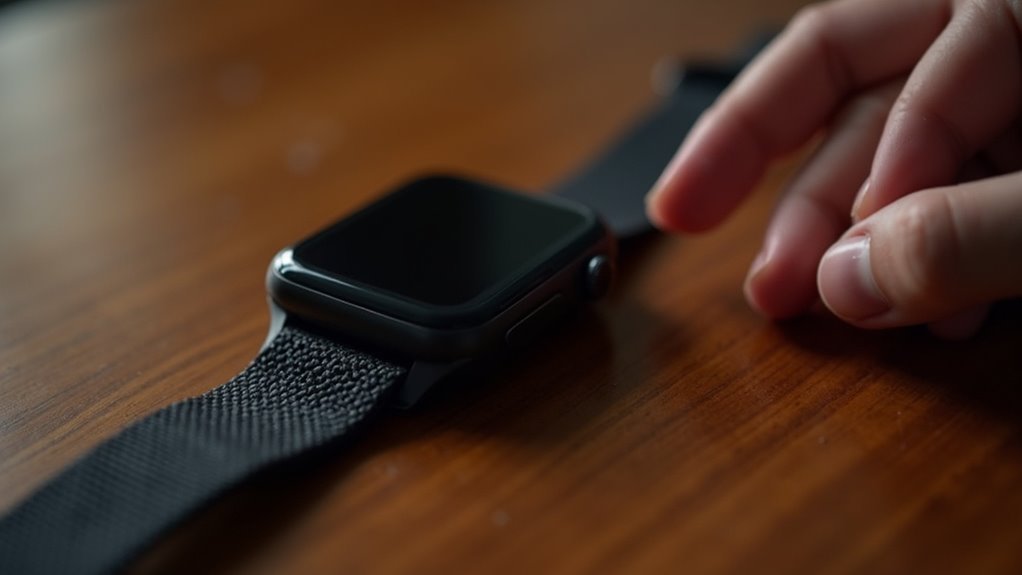


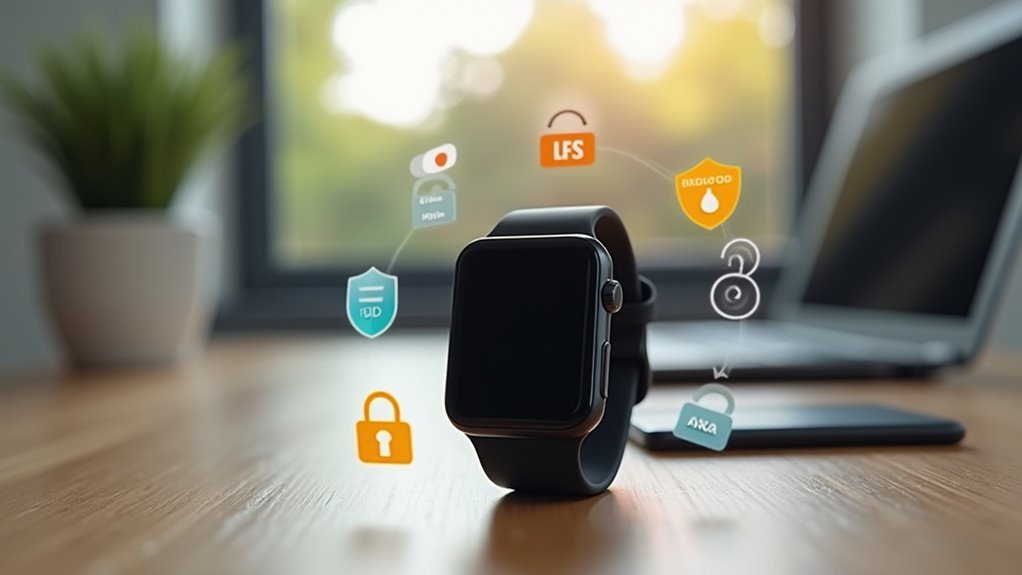
Leave a Reply